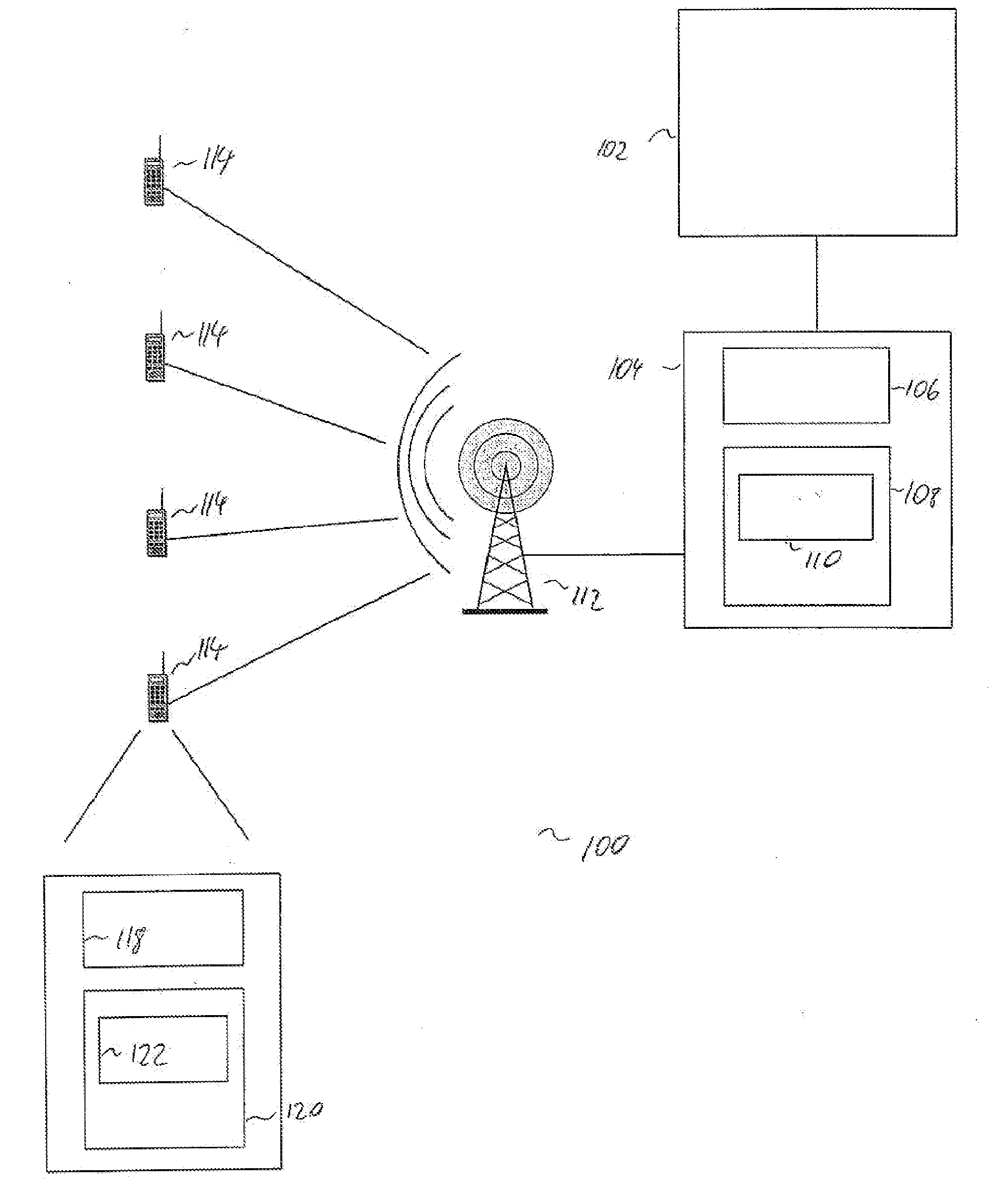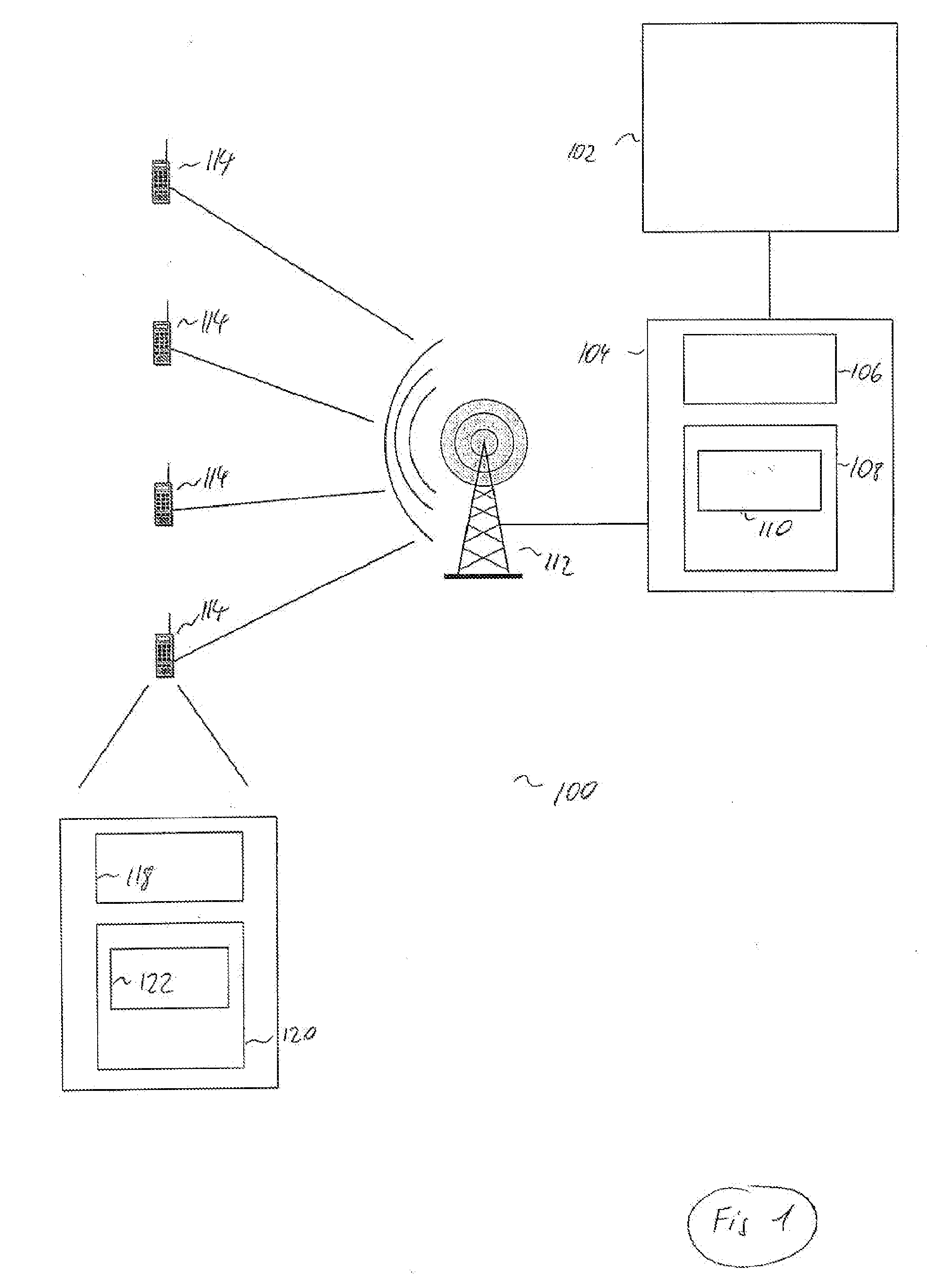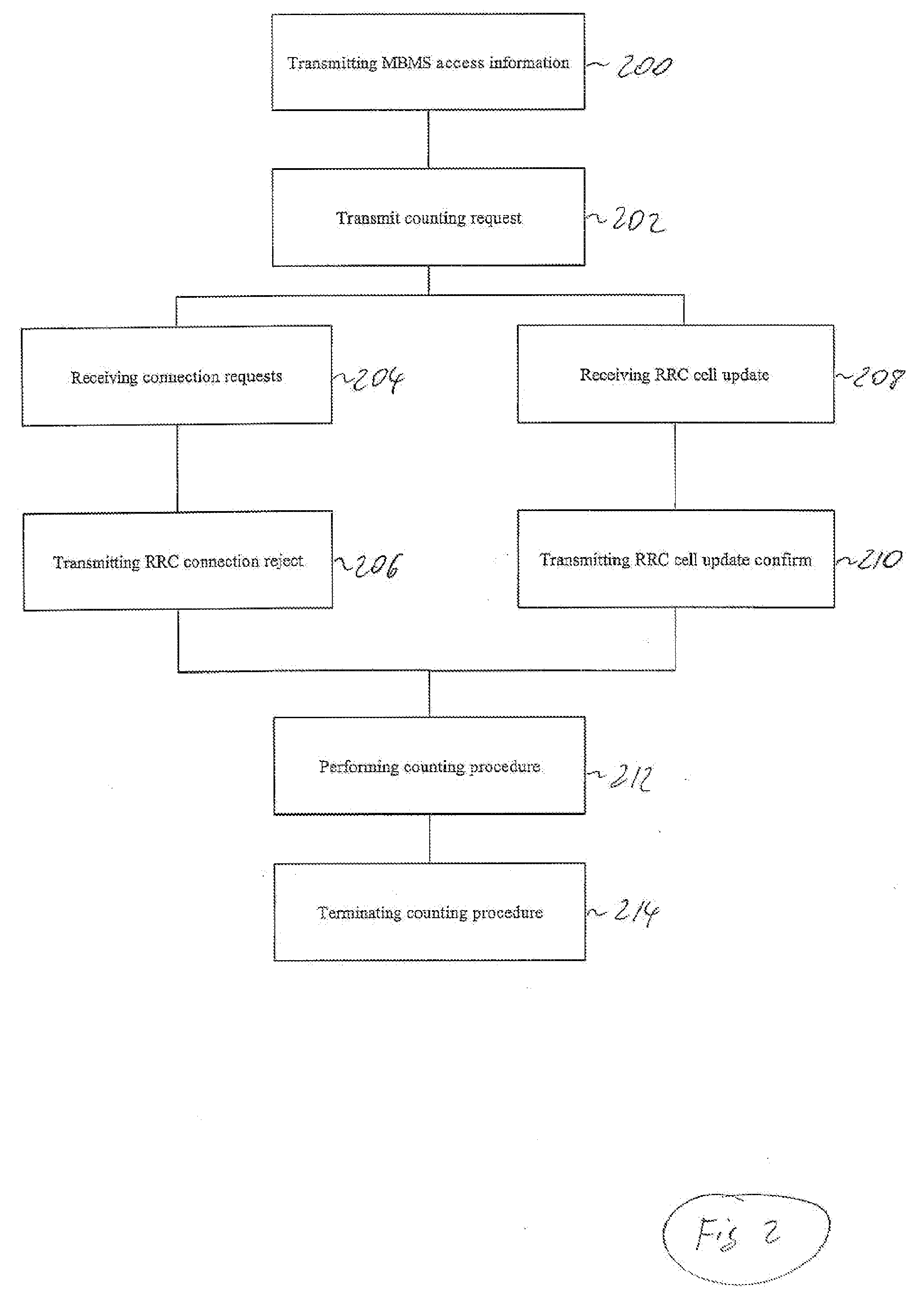Method for counting a number of mobile stations in a radio access network
a radio access network and mobile station technology, applied in broadcast transmission systems, wireless commuication services, broadcast service distribution, etc., can solve the problems of ineffective data transmission bandwidth distribution among a multitude of wireless users, inconvenient operation, and inability to meet the needs of small number of users
- Summary
- Abstract
- Description
- Claims
- Application Information
AI Technical Summary
Benefits of technology
Problems solved by technology
Method used
Image
Examples
Embodiment Construction
[0029]FIG. 1 shows a block diagram of a radio access network architecture 100. The radio access network comprises a core network 102. The radio access network itself comprises the radio network controller 104 and a node B (base station) 112. Thereby, the core network is responsible for switching and routing voice and data connections, while the radio access network handles all radio related functionalities.
[0030]The radio network controller (RNC) 104 comprises a processor 106 and a memory 108. The memory 108 comprises a program module 110 comprising computer executable instructions being executable by the processor 106. In the present example, the base station constituted by the node B 112 provides radio coverage to one given cell. In FIG. 1, the node B 112 is communicating to four user equipments (UEs) 114 and to the RNC 104, whereby the connection to the RNC 104 is established via a respective interface riot shown here.
[0031]Each of the UEs 114 comprises a processor 118 and a memo...
PUM
 Login to View More
Login to View More Abstract
Description
Claims
Application Information
 Login to View More
Login to View More - R&D
- Intellectual Property
- Life Sciences
- Materials
- Tech Scout
- Unparalleled Data Quality
- Higher Quality Content
- 60% Fewer Hallucinations
Browse by: Latest US Patents, China's latest patents, Technical Efficacy Thesaurus, Application Domain, Technology Topic, Popular Technical Reports.
© 2025 PatSnap. All rights reserved.Legal|Privacy policy|Modern Slavery Act Transparency Statement|Sitemap|About US| Contact US: help@patsnap.com



